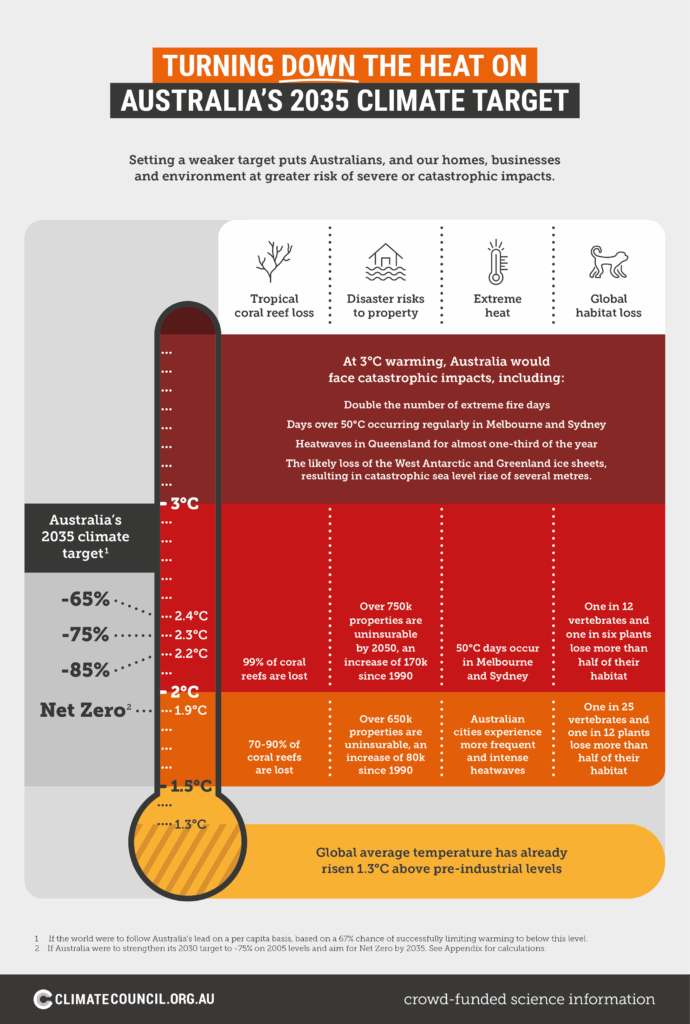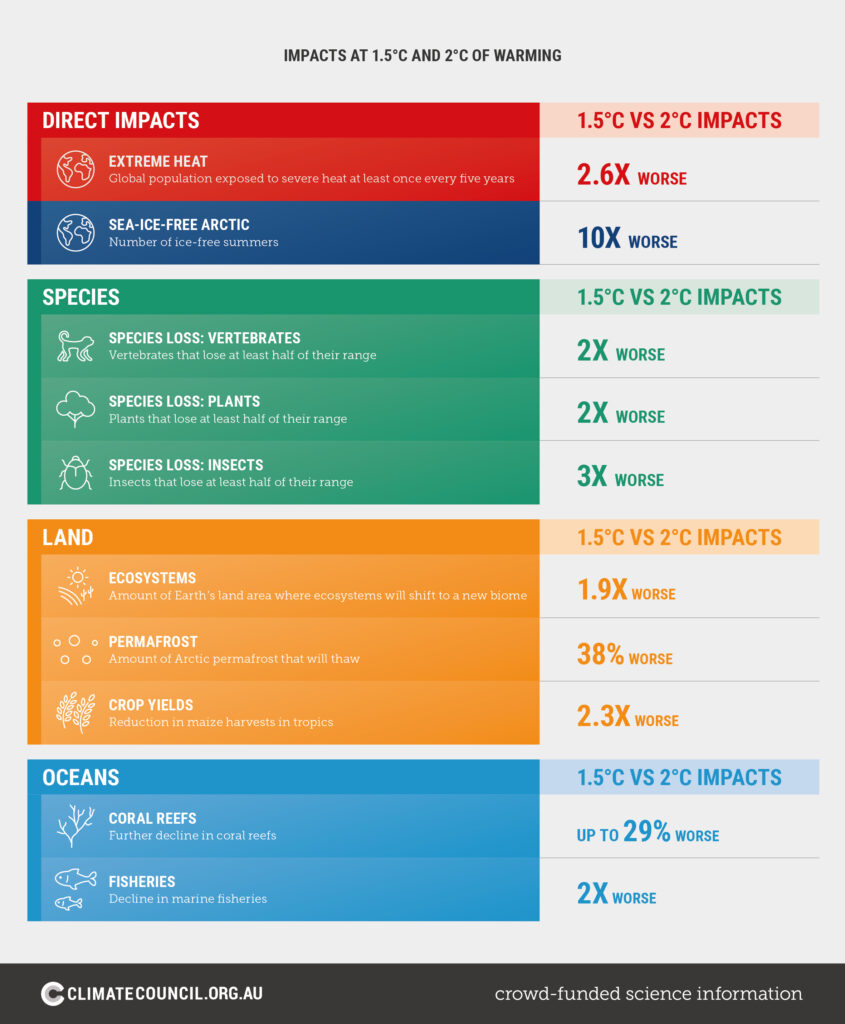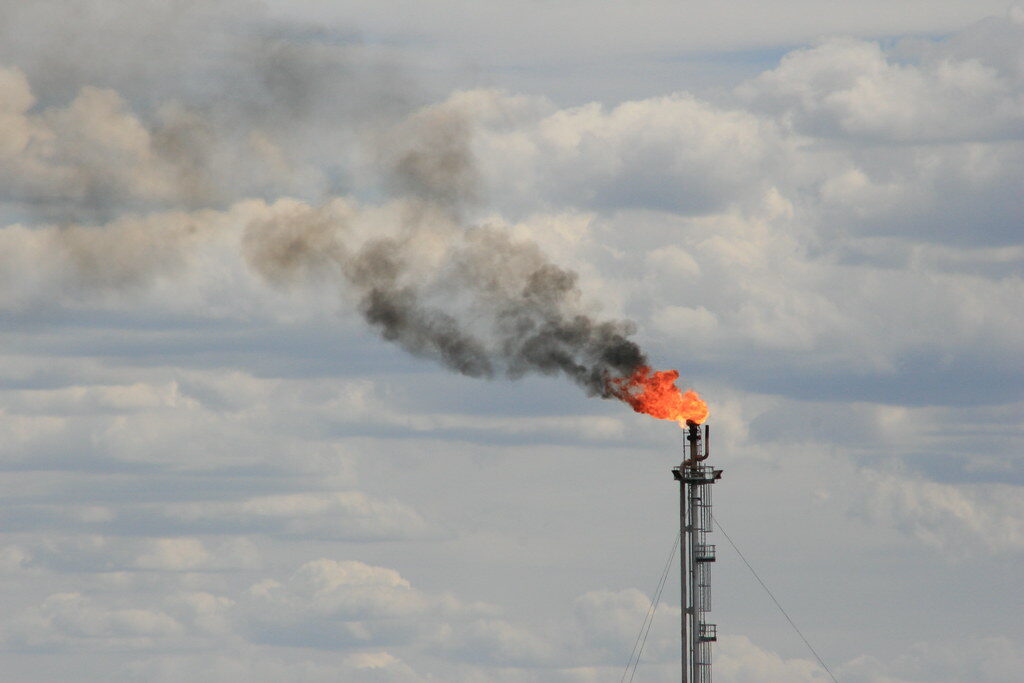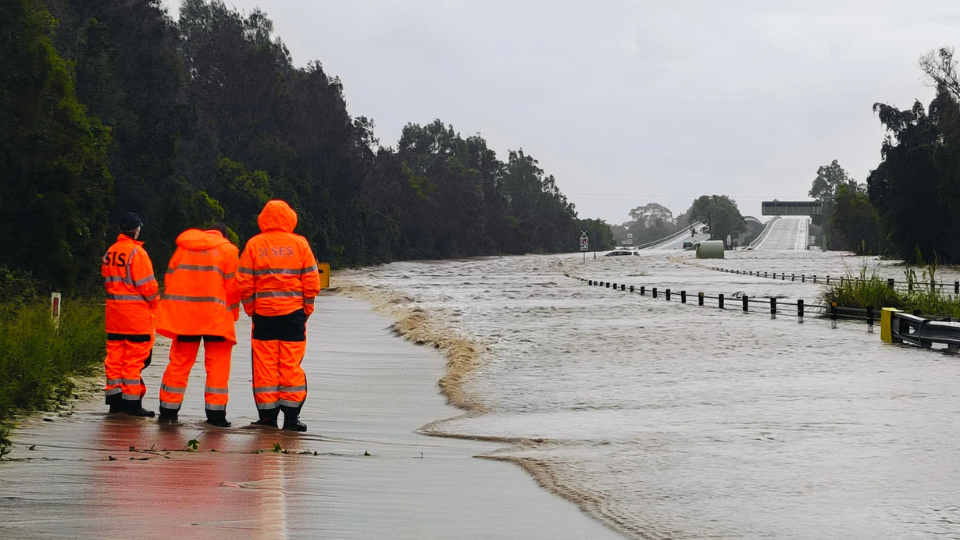The Paris Agreement, adopted by 195 countries in 2015, represents the world’s collective approach to tackling climate change. Under the agreement, nations submit targets to cut climate pollution – described as Nationally Determined Contributions. Together, these targets chart a global pathway to slash climate pollution and prevent global temperatures from exceeding agreed limits.
Under the Paris Agreement, countries are required to submit increasingly strong targets every five years, enabling them to “ratchet up” (or ramp up) their effort over time to cut climate pollution.
National targets need to be backed by plans and policies to allow those planned reductions to be achieved.
This year marks a critical moment for our climate future. Under the Paris Agreement, nations are required to submit new 2035 climate targets. Collectively, these targets must slash global climate pollution fast enough to keep temperatures within internationally agreed limits designed to prevent catastrophic harm to people and ecosystems.
The central goal of the Paris Agreement is “holding the increase in the global average temperature to well below 2°C above pre-industrial levels” and pursuing efforts “to limit the temperature increase to 1.5°C above pre-industrial levels.”
Australia’s 2035 climate target is an opportunity to set Australia on the right path, one which keeps our kids safer from the impacts of climate change and sets our economy up for success in a fossil fuel-free world. Climate Council’s report, Stronger Target, Safer Future: Why Australia’s 2035 Climate Target Matters, provides a framework for setting the strongest possible targets.
Securing a safer future means hitting the brakes on accelerating climate change
Climate science is clear: humanity is now releasing huge volumes of heat-trapping greenhouse gases into our atmosphere, primarily from the burning of coal, oil, and gas. This layer of gas acts like a blanket, trapping more heat every year. That heat fuels worsening extreme weather events and is dramatically damaging the ecological systems that sustain human life. In other words, we are living through a climate crisis.
In the future, the scale and severity of the climate crisis will depend on:
- How quickly we cut climate pollution; and
- How much global temperatures rise as a result.
Every fraction of a degree of global temperature rise leads to more frequent and ferocious extreme weather events, ecosystem damage, and impacts on lives around the world. On the other hand, avoiding even a fraction of a degree of global heating is extremely significant in reducing risks to communities worldwide.
Global average temperature rise is now 1.3°C above the pre-industrial average and, in 2024, global average temperatures hit 1.6°C over a full year, breaking through 1.5°C for the first time. Importantly, these temperature thresholds cannot be breached in a single year – climate science, and the Paris Agreement, take a longer-term view of global average temperature over decades. But this is a clear warning sign that we are moving closer and closer to exceeding the 1.5°C temperature threshold.
We are currently on a trajectory towards drastic global temperature rise and catastrophic climate impacts that could undermine the foundations of our society, prosperity, and security. Swift action to slash climate pollution from the burning of coal, oil and gas is the only solution which can protect those most vulnerable to the catastrophic impacts.
“Climate history is playing out before our eyes. We’ve had not just one or two record-breaking years, but a full 10-year series. This has been accompanied by devastating and extreme weather, rising sea levels and melting ice, all powered by record-breaking greenhouse gas levels due to human activities.” – WMO Secretary-General Celeste Saulo.
The rate of global warming is now 0.27°C per decade and, without urgent efforts to cut climate pollution, we will overshoot the Paris Agreement’s goal of holding warming well below 2ºC in less than two decades. Climate change is accelerating and the risks are escalating at a much quicker pace than we previously thought.
The UN’s latest assessment concluded that the “current national climate plans fall miles short of what’s needed to stop global heating from crippling every economy, and wrecking billions of lives and livelihoods across every country”.
It is in this context that countries are required to submit their 2035 target under the Paris Agreement later this year.
What climate target should Australia commit to?
Australia will submit our new 2035 climate target, a Nationally Determined Contribution, under the Paris Agreement this year. The current target, to reduce Australia’s climate pollution 43% on 2005 levels by 2030, was legislated in 2022.
The Climate Change Authority has been charged with providing advice to the Australian Government on setting and achieving its 2035 target. This advice is expected to be shared imminently. In 2024, the Authority released an issues paper, ‘Targets, Pathways and Progress’, which considered a target range of 65-75% below 2005 levels by 2035.
In anticipation of this advice being provided to the Australian Government, Climate Council commissioned Climate Resource to assess the global warming implications of an Australian 2035 climate target. The analysis uses the latest emissions data and shows what an Australian target means for global average temperature risk.
This new analysis shows the only Australian target that’s compatible with holding global warming below 2°C is net zero by 2035. The closer the Australian Government’s 2035 climate target gets to net zero, the less climate risk Australians face.
The analysis also shows that a 2035 climate target of -75% or more (on 2005 levels) is aligned with more than 2°C of global heating, but likely less than 2.3°C*. Weaker targets are aligned with even higher levels of global heating. Each fraction of a degree of global heating is associated with more catastrophic impacts to communities and ecosystems. A -65% target is aligned with below 2.4°C of global heating.
The Australian Government must set the strongest possible 2035 climate target. A stronger target will keep Australians safer. A weaker target risks more disasters, more damage and more danger.

Climate consequences if the world fails to set strong targets
As our climate has warmed, Australia has been being hit hard. Where long-term global warming is currently about 1.3°C above pre-industrial levels, Australia has warmed by an average of around 1.51°C since national records began in 1910.
This increase in temperature is fuelling more frequent and intense extreme weather events, including extreme heat, heavy rainfall, coastal inundation, dangerous bushfire weather and drought. Many communities have now experienced back-to-back disasters that would have previously been considered a 1-in-50 or 1-in-100 year weather event.
The IPCC Special Report on Global Warming of 1.5°C (IPCC 2018) shows the risks for both human and natural systems are lower if global temperature rise stabilises at 1.5°C. There are substantial increases in extreme weather events (e.g. extreme heat, heavy precipitation events and drought) between 1.5°C and 2°C. Impacts on land-based biodiversity and ecosystems are less at 1.5°C than 2°C, but overshooting the 1.5°C target could have irreversible impacts on some species and ecosystems.

Climate change is accelerating, and current global efforts – including Australia’s – are dangerously inadequate. The future scale and severity of the climate crisis will depend on how quickly and deeply we slash global climate pollution. Each fraction of a degree of global heating is associated with more catastrophic impacts to communities and ecosystems.
For more information see our Stronger Target, Safer Future: Why Australia’s 2035 Climate Target Matters report.
Climate Council has launched a petition calling on the Australian Government to set the strongest possible 2035 climate target – and take urgent action to meet it!
*Assuming other countries adopt the same per-capita share of the global carbon budget.










